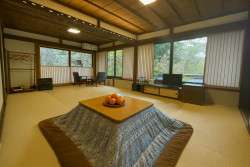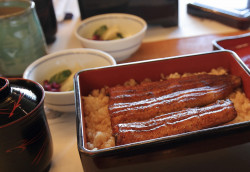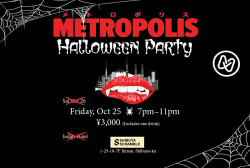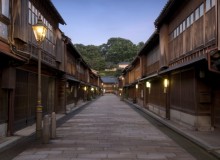
June 16, 2005
Stepping into the past
Beaches, museums—and painted ladies—await visitors in Atami and Ito
By Metropolis
Originally published on metropolis.co.jp on June 2005

The resort areas of Atami and Ito are celebrated for their beaches and onsen, but a lesser-known attraction makes them can’t-miss destinations for the foreign tourist: geisha. Though toiling far from the traditional geisha stronghold of Kansai, the local practitioners of this vanishing art actually outnumber their sisters in Kyoto.
Ito is a seaside town that “officially has the best hot springs in the Kanto region, and the second best in all of Japan.” Who rates these things, I don’t know, and how they decide which places are the best is also a mystery. The area is popular with Japanese and foreigners alike, but it hasn’t become a total tourist trap and retains its original charm. Visitors can stroll along the seafront, buy knickknacks in the winding shopping streets, or peruse one of the many museums. A well-known song about the town’s beauty, “Mikan no Hana Saku Oka” (The Hill Where Mikan Flowers Bloom), attests to Ito’s popularity among the Japanese.
The area has also been popular with Japanese literary figures like Naoya Shiga and Yasu Yamamoto, who used Atami as a retreat. They stayed in Kiunkaku, a beautiful house with an amazing Japanese garden that has now been turned into a museum, and serves as a cultural and tourist center for the city. Another highlight is the celebrated fireworks show that takes place over Atami Bay, which this year happens on June 19, July 25 and July 28.
Atami also boasts 1.5 times as many active geisha as Kyoto—though the latter turn their noses up at the women who perform here, as it’s believed that these “geisha for hire” degrade the art by performing for businessmen at their hotels for money. Atami geisha, however, also put on shows at the Giegi Kenban theater, where the performances change with the seasons. The version we saw was made up of seven short dances, including one about the beauty of snow and one about a gang of girl thieves.

In this day and age, becoming a geisha is an unusual career move, to say the least. When asked why they chose it, the three young women who performed all had different answers. The first, Hotaru, said, “I wanted to leave home and be independent and make a life for myself.” Her friend Miko told me, “My story is the opposite. My mother was a geisha, so that tradition was passed down to me.” The last, Chizuho, had yet another reason. “I came to Atami on vacation and I saw a picture of the geisha artists, and that was the turning point for me.”
If visitors fancy donning a wig and a kimono themselves, they can take a short course at the Ozashiki University. The class is similar to a make-over, but participants also learn about how to behave and move like a geisha. The “Geisha Iki-Iki” course is a one-hour session that teaches the basics of manners and make-up, and which also includes a costume fitting and makeover. The other option is a “Geisha Practice Workshop” (men can also participate in this one), which lasts two days and involves performances with other geisha.
Atami is about 45min on the JR Hikari shinkansen from Tokyo station. The cost is ¥4,080. Ito is a further 23min on the Ito line. Because of the mild climate, the area is a good destination at any time of the year; it’s especially nice in winter to take a break from the biting cold.
Accommodations include the Kaifutei Ebina (www.ebina.co.jp), which is on the seafront and a 15min walk to Ito’s main shopping district. Geisha perform in Atami at the Geiko Kenban (0557-81-3575) starting at 11am on Saturdays and Sundays. Tickets cost ¥1,300. The Kiunkaku Museum (www.kiunkaku.com) is open every day except Wednesday and costs ¥310 for admission. Ozashiki University’s Geisha Iki-Iki session costs ¥12,800, while the two-day Geisha Practice Workshop is ¥18,800. Contact the Ito Tourism Association (0557-37-6105) to book a place. You can also order a geisha performance at your hotel, but this doesn’t come cheap—the hanadai (“the price of flowers”—a euphemism for paying for a geisha) will be about ¥17,000 per person for two hours, plus the cost for the banquet room. See also the Ito City Tourist Association website: www.itospa.com
[geo_mashup_map]







